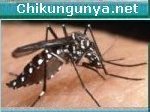Date: Tue 22 Jan 2008
Source: World Health Organization (WHO), CSR, Disease Outbreak News [edited]
< http://www.who.int/csr/don/2008_01_22/en/index.html>
Rift Valley fever in Sudan - WHO update
---------------------------------------
Human cases of Rift Valley fever (RVF) in Sudan have decreased continuously
in recent weeks. As of 15 Jan 2008, a cumulative total of 698 cases,
including 222 deaths, has been reported from 6 states (Gazeera, Kassala,
Khartoum, River Nile, Sinnar, and White Nile), yielding an overall CFR
[case fatality rate] of 32.4 per cent.
While active surveillance continues in all affected states, no new cases
have been reported since 5 Jan 2008. Only Gazeera state has reported cases
with date of onset in 2008, while several additional cases have been
reported retrospectively with date of onset in November or December 2007.
Several of the newly added cases evidence ocular presentation, which is
typically a late-occurring feature of RVF infection.
Case management related interventions and health education and vector
control efforts are continuing. WHO continues to support the Sudan Ministry
of Health in preparedness for viral haemorrhagic fever and other seasonal
outbreaks and in the procurement of essential supplies, enhancing
surveillance and training activities.
For more information, see the WHO RVF Fact Sheet at
<http://www.who.int/mediacentre/factsheets/fs207/en/index.html >, parts of
which are appended below.
--
communicated by:
ProMED-mail rapporteur Marianne Hopp
["Rift Valley Fever (RVF) is a viral zoonosis that primarily affects
animals but also has the capacity to infect humans. Infection can cause
severe disease in both animals and humans, leading to high rates of disease
and death. The disease also results in significant economic losses due to
death and abortion among RVF-infected livestock.
"RVF virus is a member of the _Phlebovirus_ genus, one of the 5 genera in
the family _Bunyaviridae_. The virus was 1st identified in 1931 during an
investigation into an epidemic among sheep on a farm in the Rift Valley of
Kenya. Since then, outbreaks have been reported in sub-Saharan and North
Africa. In 1997-1998, a major outbreak occurred in Kenya, Somalia and
Tanzania and in September 2000, RVF cases were confirmed in Saudi Arabia
and Yemen, marking the 1st reported occurrence of the disease outside the
African continent and raising concerns that it could extend to other parts
of Asia and Europe.
"The vast majority of human infections result from direct or indirect
contact with the blood or organs of infected animals. The virus can be
transmitted to humans through the handling of animal tissue during
slaughtering or butchering, assisting with animal births, conducting
veterinary procedures, or from the disposal of carcasses or fetuses.
Certain occupational groups such as herders, farmers, slaughterhouse
workers and veterinarians are therefore at higher risk of infection. The
virus infects humans through inoculation, for example via a wound from an
infected knife or through contact with broken skin, or through inhalation
of aerosols produced during the slaughter of infected animals. The aerosol
mode of transmission has also led to infection in laboratory workers.
"While most human cases are relatively mild, a small percentage of patients
develop a much more severe form of the disease. This usually appears as one
or more of 3 distinct syndromes: ocular (eye) disease (0.5-2 per cent of
patients), meningoencephalitis (less than 1 per cent) or haemorrhagic fever
(less than 1 per cent). The total case fatality rate has varied widely
between different epidemics but, overall, has been less than 1 per cent in
those documented. Most fatalities occur in patients who develop the
haemorrhagic icterus form.
"During an outbreak of RVF, close contact with animals, particularly with
their body fluids, either directly or via aerosols, has been identified as
the most significant risk factor for RVF virus infection. In the absence of
specific treatment and an effective human vaccine, raising awareness of the
risk factors of RVF infection as well as the protective measures
individuals can take to prevent mosquito bites, is the only way to reduce
human infection and deaths."
A map of the states of Sudan can be accessed at
<http://www.emro.who.int/sudan/Media/PDF/Sud-states-2006.pdf >. The number
of human cases previously confirmed by WHO was 601 on 19 Dec 2007. - Mod.CP]
Source: World Health Organization (WHO), CSR, Disease Outbreak News [edited]
< http://www.who.int/csr/don/2008_01_22/en/index.html>
Rift Valley fever in Sudan - WHO update
---------------------------------------
Human cases of Rift Valley fever (RVF) in Sudan have decreased continuously
in recent weeks. As of 15 Jan 2008, a cumulative total of 698 cases,
including 222 deaths, has been reported from 6 states (Gazeera, Kassala,
Khartoum, River Nile, Sinnar, and White Nile), yielding an overall CFR
[case fatality rate] of 32.4 per cent.
While active surveillance continues in all affected states, no new cases
have been reported since 5 Jan 2008. Only Gazeera state has reported cases
with date of onset in 2008, while several additional cases have been
reported retrospectively with date of onset in November or December 2007.
Several of the newly added cases evidence ocular presentation, which is
typically a late-occurring feature of RVF infection.
Case management related interventions and health education and vector
control efforts are continuing. WHO continues to support the Sudan Ministry
of Health in preparedness for viral haemorrhagic fever and other seasonal
outbreaks and in the procurement of essential supplies, enhancing
surveillance and training activities.
For more information, see the WHO RVF Fact Sheet at
<http://www.who.int/mediacentre/factsheets/fs207/en/index.html >, parts of
which are appended below.
--
communicated by:
ProMED-mail rapporteur Marianne Hopp
["Rift Valley Fever (RVF) is a viral zoonosis that primarily affects
animals but also has the capacity to infect humans. Infection can cause
severe disease in both animals and humans, leading to high rates of disease
and death. The disease also results in significant economic losses due to
death and abortion among RVF-infected livestock.
"RVF virus is a member of the _Phlebovirus_ genus, one of the 5 genera in
the family _Bunyaviridae_. The virus was 1st identified in 1931 during an
investigation into an epidemic among sheep on a farm in the Rift Valley of
Kenya. Since then, outbreaks have been reported in sub-Saharan and North
Africa. In 1997-1998, a major outbreak occurred in Kenya, Somalia and
Tanzania and in September 2000, RVF cases were confirmed in Saudi Arabia
and Yemen, marking the 1st reported occurrence of the disease outside the
African continent and raising concerns that it could extend to other parts
of Asia and Europe.
"The vast majority of human infections result from direct or indirect
contact with the blood or organs of infected animals. The virus can be
transmitted to humans through the handling of animal tissue during
slaughtering or butchering, assisting with animal births, conducting
veterinary procedures, or from the disposal of carcasses or fetuses.
Certain occupational groups such as herders, farmers, slaughterhouse
workers and veterinarians are therefore at higher risk of infection. The
virus infects humans through inoculation, for example via a wound from an
infected knife or through contact with broken skin, or through inhalation
of aerosols produced during the slaughter of infected animals. The aerosol
mode of transmission has also led to infection in laboratory workers.
"While most human cases are relatively mild, a small percentage of patients
develop a much more severe form of the disease. This usually appears as one
or more of 3 distinct syndromes: ocular (eye) disease (0.5-2 per cent of
patients), meningoencephalitis (less than 1 per cent) or haemorrhagic fever
(less than 1 per cent). The total case fatality rate has varied widely
between different epidemics but, overall, has been less than 1 per cent in
those documented. Most fatalities occur in patients who develop the
haemorrhagic icterus form.
"During an outbreak of RVF, close contact with animals, particularly with
their body fluids, either directly or via aerosols, has been identified as
the most significant risk factor for RVF virus infection. In the absence of
specific treatment and an effective human vaccine, raising awareness of the
risk factors of RVF infection as well as the protective measures
individuals can take to prevent mosquito bites, is the only way to reduce
human infection and deaths."
A map of the states of Sudan can be accessed at
<http://www.emro.who.int/sudan/Media/PDF/Sud-states-2006.pdf >. The number
of human cases previously confirmed by WHO was 601 on 19 Dec 2007. - Mod.CP]












